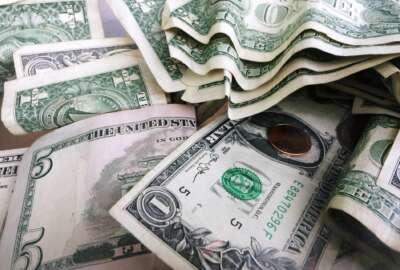Hearing weighs causes of, solutions to low morale in federal workforce
Sen. Jon Tester (D-Mont.), chairman of the Senate Subcommittee on the Efficiency and Effectiveness of Federal Programs and the Federal Workforce, hosted a heari...
A lot of people on Capitol Hill talk about how they want an effective and efficient government. Yet, many of those same people fail to support the individuals who are in the best position to bring about that effectiveness and efficiency.
“Instead of investing in new initiatives that allow agencies to better recruit, cultivate and retain a quality and experienced federal workforce, it seems that more and more politicians use these folks as a punching bag,” said Sen. Jon Tester (D-Mont.), chairman of the Senate Subcommittee on the Efficiency and Effectiveness of Federal Programs and the Federal Workforce (FPFW).
Tester’s subcommittee held a hearing Tuesday on federal morale entitled A More Efficient and Effective Government: Cultivating the Federal Workforce.
In his opening statement, Tester ticked off a laundry list of hardships federal workers have endured in recent years, from pay and hiring freezes to cuts in training and travel budgets. It all culminated in the sequester budget cuts that led to furloughs and a government shutdown.
“For some folks, sequestration and the shutdown were about scoring political points,” he said. “For others, they were the opportunity to shake their heads at the state of affairs here in Washington, D.C. For federal workers, sequestration and shutdown kept them from working and threatened their livelihood with something as equally as damaging. It implied that their work isn’t essential. Guess what? We all know that isn’t true.”
Employee groups call for end to sequester
J. David Cox, president of the American Federal of Government Employees (AFGE), said one of the reasons federal workers’ morale is so low is “because their salaries are a convenient ATM for budget agreements.”
Cox criticized recent increases in federal pension contributions.
The 2014 budget deal increased the amount newly hired employees must contribute to their pensions by 1.3 percent. Overall, employees hired after Dec. 31, 2013, are required to contribute 4.4 percent of their salary toward their pensions.
Previously, as part of the payroll tax extension approved by Congress in February 2012, lawmakers approved legislation requiring federal employees hired in 2013 to contribute a total of 3.1 percent of their salaries to their defined-benefit pensions.
Federal workers who were on the job prior to the start of this year contribute 0.8 percent toward their pensions under the Federal Employees Retirement Systems (FERS).
Colleen M. Kelley, national president of the National Treasury Employees Union (NTEU) told the committee another reason employee morale is so low is that many agencies don’t have enough people to do the job at hand, which increases the workload and adds stress to existing employees.
“Employees leave and no one is hired to replace them,” she said. “Although the recently passed bipartisan budget act changed the amount of 2014 and 2015 funding, cuts will still be needed in the years of 2016 to 2021 due to the sequester funding levels in place under the budget control act. Unless the sequester is ended, it’s going to have a crushing impact on jobs and economic growth and it will cripple the ability of the government to deliver services to the American public.”
Kelley called on Congress to end the sequester.
“If Congress wants an efficient and effective government, and I say ‘if,’ then it needs to end the sequester and to provide resources for adequate personnel and training,” she said.
Beyond these cuts to agency budgets, Kelley added, federal employees, themselves have also seen their overall compensation diminish by $138 billion in order to reduce the deficit.
“They endured the three-year pay freeze, pay reductions due to unpaid furloughs and new hires have seen increases in their pension contributions,” she said. “Despite that disproportionate burden, the 2015 budget that was passed by the House of Representatives calls for an additional $125 billion more in cuts to federal employees.”
OPM helping agencies apply lessons of Employee Viewpoint Survey
The point of the hearing was not just to gauge the level of federal employee morale, but also to identify solutions that agencies could use with the resources they have available. To that end, representatives from agencies that scored high on the 2013 Best Places to Work rankings provided testimony.
Katherine Archuleta, director of the Office of Personnel Management, referenced the results of the most recent Federal Employee Viewpoint Survey (EVS), which the Partnership for Public Service uses as the basis for the rankings.
“The 2013 EVS governmentwide results reveal that more than 80 percent of the federal employees who responded like the work they do and understand how their work relates to their agency’s goals and priorities,” Acrhuleta said. “However, there were decreases in all four human capital indices as well as in employee engagement and global satisfaction.”
Archuleta added that OPM is committed to helping agencies apply the EVS results to improve employee satisfaction and engagement.
“We have developed an online tool that provides data for agencies to use to better understand their EVS results,” she said. “That data is being used by managers and supervisors across government to improve employee engagement and to identify best practices and processes that lead to progress.”
In addition, Archuleta said President Barack second-term management agenda facilitates a more effective and efficient government.
Learning from the “Best”
According to Jeri L. Buchholz, NASA’s assistant administrator for Human Capital Management, employee buy-in to the agency’s unique mission is not the only reason NASA has been named the “Best Place to Work” among large agencies for two years running.
“Like any other large and complex organization, NASA faces management challenges in ensuring that we continue to engage our workforce and create a culture of innovation,” she said.
NASA employs three strategies to achieve those goals.
“First, we focus on connecting people to each other and the mission every day,” Buchholz said. “Connection begins at the top. NASA Administrator Charlie Bolden fundamentally believes that communication is the cornerstone to connection. He encourages every NASA staffer to use his or her voice. He visits employees in their labs and at the work sites to talk to them directly about their work and their worklife. The administrator personally reviews the results of the employee viewpoint survey … down to the center level, so he can understand how we’re doing as an agency and how we’re doing in each major subcomponent.”
To make staff members more connected, NASA is working to make geography “inconsequential,” Buchholz said, by using improved virtual communications to conduct acquisition activities, international presentations and staff conferences.
“Second, we ensure that first-line supervisors appreciate the importance of developing innovative employees,” she said. “A key to success in all areas of workforce culture is the first-line supervisor. We infuse our leadership values into potential leaders early in their careers. We have agency-level leadership development programs as well as leadership development programs at the center level. These programs have a heavy emphasis on personal effectiveness, relating to others and self-reflection. Approximately 500 NASA employees have gone through these programs.”
NASA’s third strategy for success is moving beyond a traditional monetary reward for recognizing innovative performance.
“We use every tool that’s available to us as a federal employer to recognize our employees and their achievements,” Buchholz said. “And we ask our employees to tell us what kinds of rewards they find most meaningful. Ultimately, however, there is no greater incentive to innovation than to have one’s creativity recognized and incorporated into the NASA mission.”
NASA encourages its employees to share this recognition with the public through a variety of means, including social media.
From ‘curve buster’ to one of the best
Carol Waller Pope, chairwoman of the Federal Labor Relations Authority (FLRA), told the subcommittee her agency has charted a different path than NASA when it comes to employee morale.
“In 2008, the FLRA was not only on the bottom of employee satisfaction rankings for small agencies, it was below the bottom,” she said. “That’s right, below the bottom. In 2008, the Partnership for Public Service excluded the FLRA scores on the Employee Viewpoint Survey from the small agency calculations because the FLRA scores were so low, they skewed the rankings of other agencies. We busted the curve in the wrong direction.”
By the time the 2010 survey came out, though, FLRA had turned those numbers around, showing a 250 percent improvement in employee satisfaction and a more than 400 percent increase in effective leadership. In small agency rankings, FLRA jumped from last past, 32nd, to 20th place.
“Again, the FLRA busted the curve, but this time in the right direction,” Pope said. “We’re still moving forward. We were number seven in the overall rankings in 2011 and, with the decrease overall in government rankings … we were number 8 in 2012 and 2013.”
She credited the turnaround to sustained efforts by both FLRA employees and leadership in focusing on transparency, accountability and mission accomplishment. These efforts began with a recognition that all employees were deeply committed the the agency’s mission.
“FLRA leadership clearly communicated its belief that employees did important work and did it well,” Pope said. “That resonated with employees. It probably contributed to that difficult to describe synergy that begins when employees start to feel valued. Some of the tangible things, increasing our communication, we embraced the ideas of revitalization, reinvention and re-engagement both as to our customers and our employees.”
In addition, FLRA started a weekly newsletter and sought input on how to improve employee satisfaction.
“We took the survey results seriously and drilled down and conducted our own internal, using our labor management forum, our own internal survey, to the extent one of our challenges was employees feeling under-resourced and overworked,” Pope said. “We directed resources not only to ask employees what resources they were lacking, but also to engage employees in how we could improve the work-life balance.”
Under the direction of OPM, FLRA instituted telework arrangements and now 80 percent of its employees telework at some level.
“We learned that successful efforts are multiyear and multi-pronged,” Pope said. “I was mistaken in 2009, my first year as chairman, when I announced it was the year of the FLRA employee. My mistake was that every year should be the year of the employee, not a single year. Long-term support of and engagement with our employees resulted in improved efficiencies and mission performance.”
Not only has this change in approach benefited employee satisfaction, it has netted results for the agency as a whole.
“We reduced case backlogs,” Pope said. “We improved timeliness and quality of our work. And I think that’s what made the difference with respect to employees from a low in 2009 saying the FLRA was not a place that they would recommend to their friends to work, to a very different outcome now.”
RELATED LINKS:
Best Places to Work rankings show repeat winners and all-time lows
Pay freeze, sequestration take bite out of employee satisfaction, OPM survey reveals
Obama’s second-term management agenda to focus on people power
Copyright © 2024 Federal News Network. All rights reserved. This website is not intended for users located within the European Economic Area.
Michael O’Connell is senior digital editor of Federal News Network optimizing content for the best user experience. Follow @moconnellWFED
Follow @moconnellWFED






